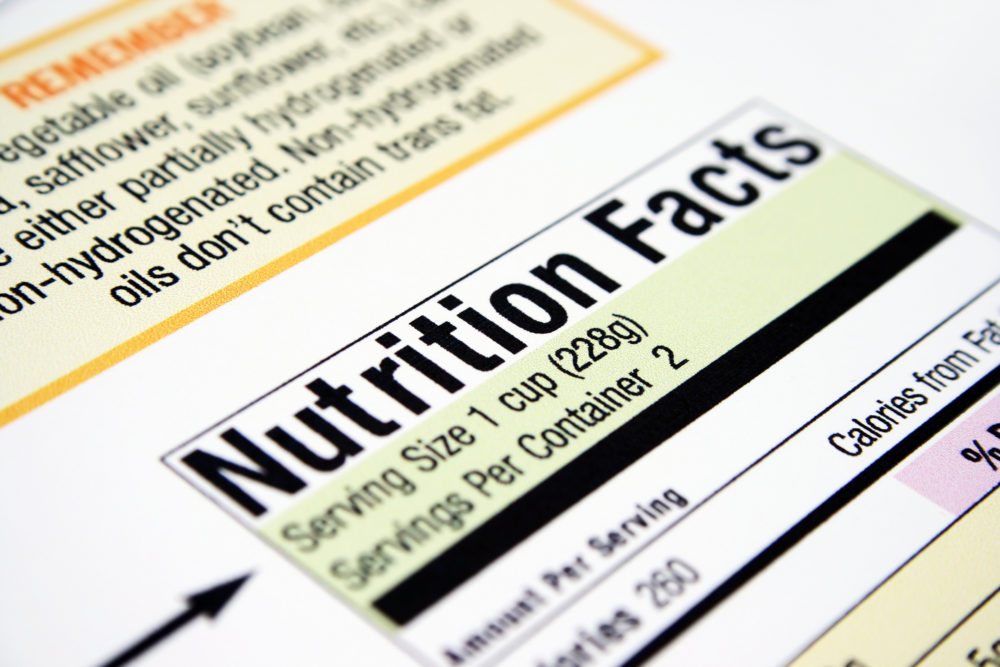FDA Issues New Guidance on How Allergens Should Be Included on Food Labels
The new draft guidance adds sesame to the list of major food allergens for the first time.

Federal regulators are calling for food labels to have more clearly marked allergy warnings for some of the most common food allergens, such as milk, peanuts, eggs, shellfish and soybeans.
Last week, the Food and Drug Administration (FDA) issued a press release announcing new draft and final guidance focusing on common food allergens that should be listed on food labels in the United States.
The guidance documents are designed to help the food industry meet requirements to list any major food allergen on the labels of FDA-regulated foods. The goal is to make the labels easy to read and to make warnings of common allergens easily spotted, so consumers can avoid ingredients they may be allergic to or have sensitivities to simply by looking at food labels and the ingredient list.
The first draft guidance, Questions and Answers Regarding Food Allergens, Including the Food Allergen Labeling Requirements of the Federal Food, Drug, and Cosmetic Act (Edition 5): Guidance for Industry, updates changes to the previous edition, which was first published in 2006.
The new guidance also adheres to the Food Allergy Safety, Treatment, Education, and Research Act of 2021 (FASTER) and the Food Allergen Labeling and Consumer Protection Act of 2004 (FALCPA), which requires foods or ingredients that contain a major food allergen to be specifically labeled with the name of the allergen.
The FDA originally identified eight major food allergens: milk, eggs, fish, shellfish, tree nuts, peanuts, wheat, and soybeans. The new draft guidance introduces sesame as an addition to that list. This addition is effective January 2023, making it the ninth major food allergen recognized in the U.S.
Allergen Labeling Guidance Exceptions
The guidance indicates that if an ingredient from a food allergen source does not contain protein, it does not need to be listed as a food allergen. This can include oils, flavoring, and colors that may come from allergens but don’t contain protein.
Roots, leaves, stems, bark, or other plant parts that are separate from the tree nut or allergic portion are not considered allergens and do not need to be listed on the label. A major allergen that is unintentionally mixed into food via cross-contamination is also not subject to allergen labeling. This can include contamination from the use of shared storage, production equipment, or transportation.
Foods that do not have major allergens as ingredients do not need a “contains” statement, even if consumers are sensitive to a certain product. For example, gluten is not considered a major allergen, even though many people experience sensitivities to it, so a “contains” statement is not necessary for gluten.
If a dietary supplement does not have an ingredient list, the “contains” statement must be included on the package. Food allergens do not need to be listed for cosmetics or household cleaning products.
The guidance also updates labeling concerning fish and shellfish, as well as including images of examples of labeling requirements.
The second guidance is a final guidance issued by the FDA with the same title. This guidance focuses on finalizing the fourth edition of the guidance published in 2006 and includes information for questions and answers to the previous edition that was not changed.

Did You Know?
Change Healthcare Data Breach Impacts Millions of Customers
A massive Change Healthcare data breach exposed the names, social security numbers, medical and personal information of potentially 100 million Americans, which have now been released on the dark web. Lawsuits are being pursued to obtain financial compensation.
Learn MoreThe FDA has opened public comments for the draft guidance for 60 days from the publication of the guidance in the Federal Register. Comments can be submitted electronically on www.regulations.gov.
Comments can also be submitted via mail with Docket ID: FDA-2022-D-0099 to:
Dockets Management Staff
Food and Drug Administration
5630 Fishers Lane, Rm 1061
Rockville, MD 20852




0 Comments